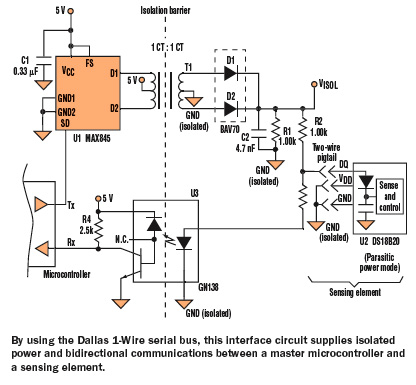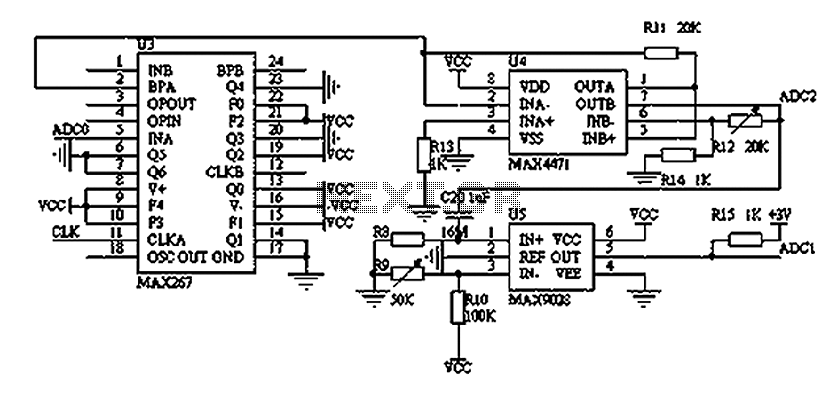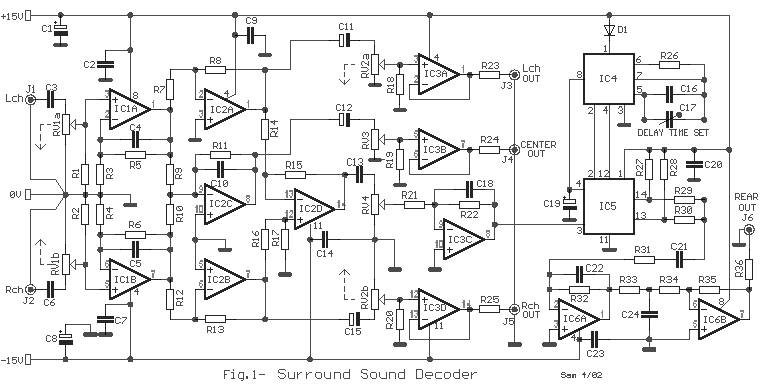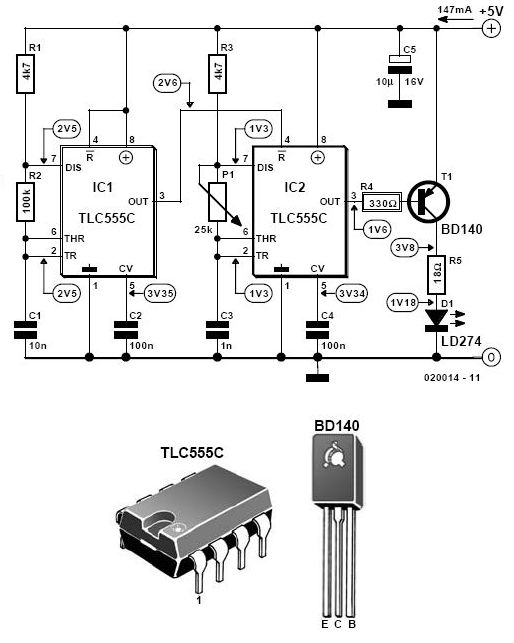
am rf amp for internal antenna circuit

Any NPN transistor can be used. The author used a 2N3904, but a 2N2222A should work just as well. A good, low noise transistor would be even better. Some radios only have three connections to their ferrite bar antenna: the antenna connection to the tuning capacitor, ground (two wires twisted together), and secondary (the smaller number of turns). In this case, treat the twisted wires as ground and the secondary wire as the base connection to the transistor. The transistor will then receive its base bias from the radio. R1 changes with the supply voltage. If your radio is 9V, use 56K. If it is 6V, use 47k. If it is 3V, use 33k. The goal is to bias the collector of the transistor to one half the supply voltage. The schematic shown is for a negative ground radio. For a positive ground radio, substitute a PNP transistor.
The circuit utilizes a standard NPN transistor, with the 2N3904 being a common choice, although the 2N2222A is also suitable. The selection of a low noise transistor is recommended to enhance performance, particularly in radio applications. The radio in question typically connects to a ferrite bar antenna with three primary connections: the antenna connection to the tuning capacitor, a ground connection formed by twisting two wires together, and a secondary connection that represents a smaller number of turns on the antenna winding.
In this configuration, the twisted wires serve as the ground reference, while the secondary wire is wired to the base of the transistor. This arrangement allows the transistor to receive its base bias directly from the radio's circuitry. The resistor R1 is crucial for setting the appropriate biasing conditions based on the supply voltage of the radio. The recommended resistor values are as follows: 56kΩ for a 9V supply, 47kΩ for a 6V supply, and 33kΩ for a 3V supply. This biasing ensures that the collector of the transistor operates around half of the supply voltage, optimizing the transistor's performance in the circuit.
The schematic presented is designed for a negative ground configuration. In scenarios involving a positive ground radio, it is essential to replace the NPN transistor with a PNP transistor to maintain proper functionality and signal integrity. This design consideration is critical for ensuring that the circuit operates effectively within the intended application.Any NPN transistor can be used. The author used a 2N3904, but a 2N2222A should work just as well. A good, low noise transistor would be even better. Some radios only have three connections to their ferrite bar antenna: the antenna connection to the tuning capacitor, ground (two wires twisted together) and secondary (the smaller number of turns). I n this case, treat the twisted wires as ground, and the secondary wire as the base connection to the transistor. The transistor will then receive its base bias from the radio. R1 changes with the supply voltage. If your radio is 9V, use 56K. If it is 6V, use 47k. If it is 3V, use 33k. The goal is to bias the collector of the transistor to one half the supply voltage. The schematic shown is for a negative ground radio. For a positive ground radio, substitute a PNP transistor. 🔗 External reference
The circuit utilizes a standard NPN transistor, with the 2N3904 being a common choice, although the 2N2222A is also suitable. The selection of a low noise transistor is recommended to enhance performance, particularly in radio applications. The radio in question typically connects to a ferrite bar antenna with three primary connections: the antenna connection to the tuning capacitor, a ground connection formed by twisting two wires together, and a secondary connection that represents a smaller number of turns on the antenna winding.
In this configuration, the twisted wires serve as the ground reference, while the secondary wire is wired to the base of the transistor. This arrangement allows the transistor to receive its base bias directly from the radio's circuitry. The resistor R1 is crucial for setting the appropriate biasing conditions based on the supply voltage of the radio. The recommended resistor values are as follows: 56kΩ for a 9V supply, 47kΩ for a 6V supply, and 33kΩ for a 3V supply. This biasing ensures that the collector of the transistor operates around half of the supply voltage, optimizing the transistor's performance in the circuit.
The schematic presented is designed for a negative ground configuration. In scenarios involving a positive ground radio, it is essential to replace the NPN transistor with a PNP transistor to maintain proper functionality and signal integrity. This design consideration is critical for ensuring that the circuit operates effectively within the intended application.Any NPN transistor can be used. The author used a 2N3904, but a 2N2222A should work just as well. A good, low noise transistor would be even better. Some radios only have three connections to their ferrite bar antenna: the antenna connection to the tuning capacitor, ground (two wires twisted together) and secondary (the smaller number of turns). I n this case, treat the twisted wires as ground, and the secondary wire as the base connection to the transistor. The transistor will then receive its base bias from the radio. R1 changes with the supply voltage. If your radio is 9V, use 56K. If it is 6V, use 47k. If it is 3V, use 33k. The goal is to bias the collector of the transistor to one half the supply voltage. The schematic shown is for a negative ground radio. For a positive ground radio, substitute a PNP transistor. 🔗 External reference





